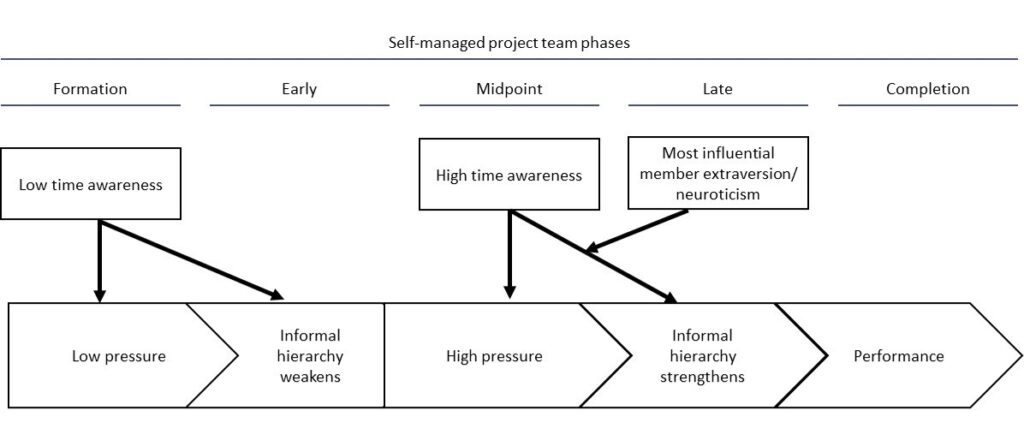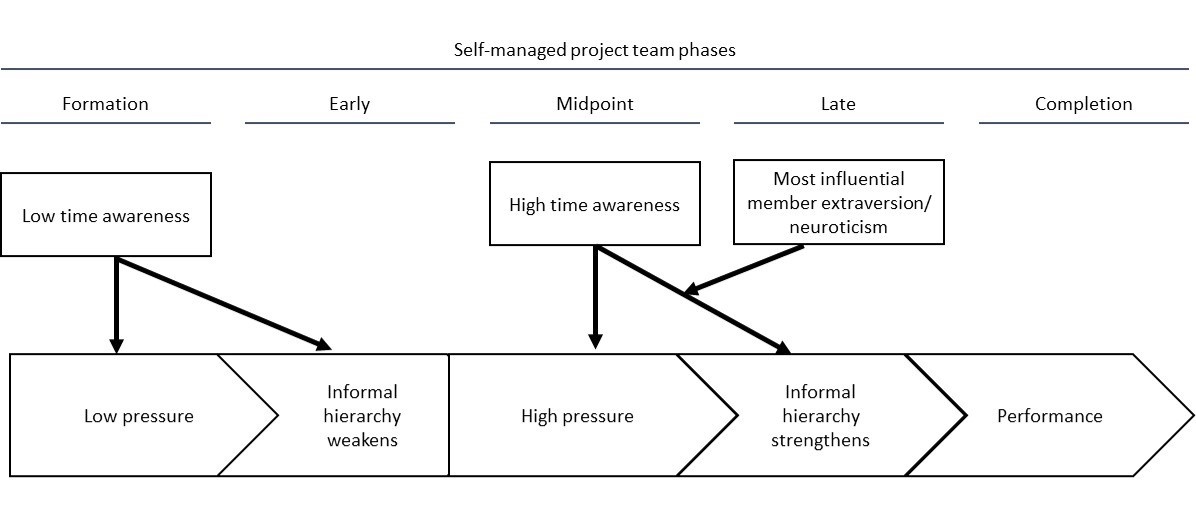What is Always Passing Us by But Also Missing in Hierarchy Research? Time
In this post, authors Bret Sanner and Karoline Evans discuss their recent article, Informal Hierarchy Strength Changes and Their Effect on Performance, published in Group & Organization Management.
What motivated you to pursue this research?
Before we went to graduate school, we were both consultants. During that time, we noticed that our consulting teams’ hierarchies changed to be more or less present at different times, and those hierarchy changes impacted how well the teams performed. In other words, we believed that hierarchies change and that those changes matter. However, when we went to graduate school and took a seminar on hierarchies, we were surprised to see that informal hierarchy research missed that the presence of informal hierarchies change and that those changes matter. So, we started this project over seven years ago in graduate school, because we wanted hierarchy research to reflect the most impactful aspect of hierarchies: that they change over time.

In what ways is your research innovative, and how do you think it will impact the field?
We are one of the first papers to empirically investigate informal hierarchy changes. Indeed, the most influential theory about informal hierarchies is built on the assumption that informal hierarchies don’t change. However, we show that informal hierarchies do change at predictable times. We also demonstrate that those changes have a larger impact on performance than the amount of informal hierarchy at any given point in time. Moreover, we found that the most influential member can impact how the informal hierarchy changes. We hope our findings will lead informal hierarchy research to shift away from its predominantly static approach and move towards a more dynamic approach that focuses on changes.
What advice would you give to new scholars and incoming researchers in this particular field of study?
Team hierarchy research isn’t the only team topic that is missing time and change. We believe that many aspects of teams could be better understood if they were investigated in a dynamic way. We hope that more scholars will deliberately think about the ways in which teams change over time and how that those changes impact important outcomes like performance. Though it is challenging to conceptualize and implement a longitudinal study that looks at team dynamics, this approach more accurately reflects the reality that teams change over time.































































































